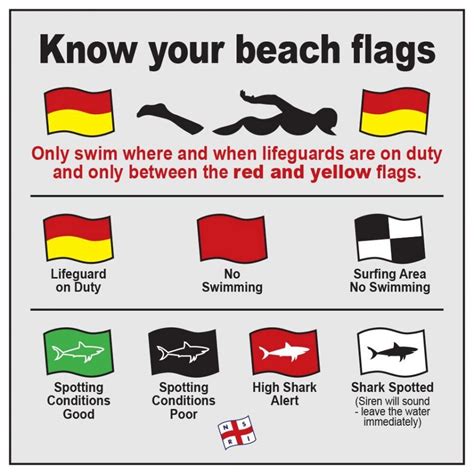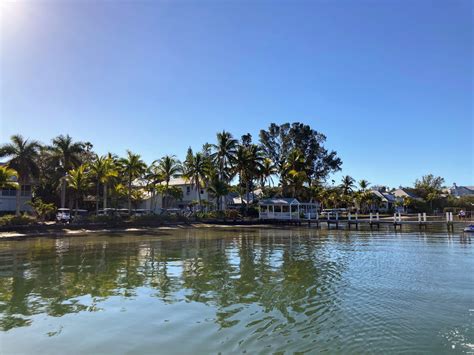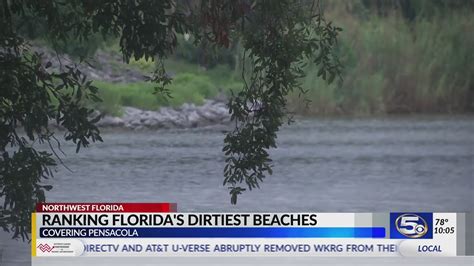
US Beaches: Sun, Sand, and… Danger? A Guide to America’s Riskiest Shores
As summer beckons, millions are drawn to the allure of America’s beaches, but beneath the idyllic surface lurks hidden dangers. A new analysis reveals the beaches with the highest risk factors, considering elements like strong currents, dangerous marine life, pollution levels, and reported incidents. These factors can transform a relaxing getaway into a life-threatening situation, urging beachgoers to remain vigilant and informed.
For many, the summer months mean beach vacations. The United States boasts coastlines stretching across thousands of miles, each offering unique experiences. However, the allure of sun, sand, and surf can mask significant dangers. From unpredictable currents and hazardous marine life to pollution concerns and the potential for injuries, numerous factors can quickly turn a beach outing into a perilous situation. Understanding these risks and knowing how to mitigate them is crucial for ensuring a safe and enjoyable beach experience.
Key Factors Contributing to Beach Risks
Several elements contribute to the overall risk profile of a beach. These can be broadly categorized into environmental factors, marine life hazards, pollution levels, and human-related risks.
- Strong Currents: Rip currents, undertows, and other strong currents are among the most significant hazards at beaches. Rip currents, in particular, are responsible for numerous drownings each year. These powerful, narrow channels of water can pull swimmers away from the shore at alarming speeds.
- Dangerous Marine Life: Certain beaches are home to marine life that poses a threat to swimmers. Sharks, jellyfish, stingrays, and venomous fish can all cause injuries ranging from minor stings to life-threatening attacks.
- Pollution Levels: Water quality is a critical factor in determining the safety of a beach. High levels of bacteria, sewage, and other pollutants can lead to illnesses and infections. Beaches near urban areas or industrial sites are often more susceptible to pollution.
- Reported Incidents and Safety Measures: The frequency of reported incidents, such as drownings, injuries, and rescues, can provide valuable insights into the overall safety of a beach. Additionally, the presence of lifeguards, warning flags, and other safety measures can significantly reduce the risk of accidents.
Beaches with Elevated Risk Profiles
While specific rankings can vary depending on the criteria used, several beaches consistently appear on lists of the most dangerous shores in the United States. These beaches are often characterized by a combination of the factors mentioned above.
-
New Smyrna Beach, Florida: Located on Florida’s Atlantic coast, New Smyrna Beach is often cited as one of the most dangerous beaches in the US, primarily due to its high shark attack rate. “New Smyrna Beach, Florida has earned a reputation as one of the shark attack capitals of the world, primarily due to its location near the Ponce de Leon Inlet, which provides a rich feeding ground for sharks.” While most shark bites are minor, the sheer frequency of encounters is a cause for concern. The strong currents and frequent rip tides further contribute to the beach’s risk profile.
-
Ormond Beach, Florida: Also in Florida, Ormond Beach presents significant risks due to rip currents and marine life. The area experiences frequent strong currents that can quickly sweep swimmers out to sea. Lifeguard presence is crucial here, as rescues are common during peak seasons. The local ecosystem supports a variety of marine species, including jellyfish and occasional sharks.
-
Cocoa Beach, Florida: Known for its surfing culture, Cocoa Beach also grapples with strong currents. The currents present challenges for even experienced surfers, and swimmers are advised to exercise caution. The beach sees a high volume of visitors, which increases the likelihood of incidents.
-
Daytona Beach, Florida: Daytona Beach’s wide, flat shoreline is popular for driving, but it also contributes to dangerous surf conditions. The shallow waters can create powerful waves and unpredictable currents. This beach also sees a considerable number of stingray injuries during certain times of the year.
-
Hanauma Bay, Hawaii: Although renowned for its beauty and snorkeling opportunities, Hanauma Bay poses risks related to its unique underwater environment. The bay’s coral reefs, while visually stunning, can cause injuries to swimmers who venture too close. Strong currents within the bay can also be hazardous. Overcrowding during peak seasons can further exacerbate these risks, leading to more accidents and environmental damage.
-
South Padre Island, Texas: South Padre Island presents multiple hazards, including strong rip currents and the presence of Portuguese man-of-war jellyfish. These jellyfish deliver painful stings, and their tentacles can remain venomous even after they wash ashore. The island’s remote location can also make rescue operations more challenging.
-
Outer Banks, North Carolina: The Outer Banks are known for their scenic beauty but also for their treacherous currents and unpredictable weather. “The Outer Banks is a barrier island chain known for strong rip currents and powerful surf conditions.” The area is prone to severe storms, which can create dangerous conditions for swimmers and boaters. Shark sightings are also relatively common in this region.
-
Gulf Shores, Alabama: Gulf Shores faces challenges related to water quality and marine life. The area occasionally experiences red tide blooms, which can release toxins into the water and cause respiratory irritation and other health problems. Jellyfish and other stinging marine creatures are also common along the coast.
-
Myrtle Beach, South Carolina: Myrtle Beach attracts millions of visitors each year, but its popularity also contributes to overcrowding and increased incidents. The beach experiences strong currents and high surf conditions, particularly during storms. Lifeguard presence is essential for managing the risks associated with such a busy beach.
-
Cape Disappointment State Park, Washington: Located where the Columbia River meets the Pacific Ocean, Cape Disappointment presents unique dangers. Powerful currents, unpredictable waves, and cold water temperatures make swimming extremely hazardous. The area is also prone to dense fog, which can reduce visibility and increase the risk of accidents.
Mitigating Beach Risks: Safety Measures and Precautions
Despite the potential dangers, beaches can still be enjoyed safely with proper precautions and awareness. Here are some essential safety measures to keep in mind:
-
Swim at Beaches with Lifeguards: “Always swim at beaches where lifeguards are present and heed their warnings.” Lifeguards are trained to identify hazards and respond to emergencies. They can provide valuable information about current conditions and offer guidance on safe swimming practices.
-
Heed Warning Flags and Signs: Pay close attention to warning flags and signs posted at the beach. These indicators provide important information about potential hazards, such as strong currents, dangerous marine life, or poor water quality. Understanding the meaning of different flags and signs is crucial for making informed decisions about whether to enter the water.
-
Learn to Identify Rip Currents: Rip currents are one of the most significant dangers at beaches, but knowing how to spot them can save your life. Look for channels of choppy water, areas with discolored water, or lines of foam moving seaward. If caught in a rip current, do not panic. Swim parallel to the shore until you are out of the current, and then swim back to the beach at an angle.
-
Check Water Quality Reports: Before heading to the beach, check water quality reports to ensure that the water is safe for swimming. Local health departments and environmental agencies often publish regular updates on water quality conditions at various beaches. Avoid swimming in areas with high levels of bacteria or other pollutants.
-
Be Aware of Marine Life: Be mindful of the marine life that may be present in the area. Avoid touching or approaching marine animals, and be cautious when walking in shallow water, where stingrays and other creatures may be hiding. Wear appropriate footwear to protect your feet from sharp objects and stinging organisms.
-
Stay Hydrated and Protect Yourself from the Sun: Dehydration and sunburn can quickly ruin a beach outing. Drink plenty of water throughout the day, and apply sunscreen with a high SPF to protect your skin from the sun’s harmful rays. Wear a hat and sunglasses for added protection.
-
Never Swim Alone: Always swim with a buddy, and keep a close eye on children and inexperienced swimmers. Designate a responsible adult to supervise children at all times, and make sure that everyone knows how to recognize and respond to an emergency.
-
Be Prepared for Changing Weather Conditions: Weather conditions at the beach can change rapidly. Be aware of the forecast, and be prepared to leave the water if a storm is approaching. Lightning, strong winds, and heavy rain can all create dangerous conditions for swimmers and boaters.
-
Learn CPR and Basic First Aid: Knowing CPR and basic first aid can be invaluable in an emergency. Consider taking a course to learn these essential skills, which could potentially save a life.
-
Know Your Limits: Don’t overestimate your swimming ability. If you are not a strong swimmer, stay in shallow water and wear a flotation device. Be aware of your physical limitations, and don’t push yourself beyond your comfort zone.
The Impact of Climate Change on Beach Safety
Climate change is exacerbating many of the risks associated with beaches. Rising sea levels, increased storm intensity, and changes in water temperature are all contributing to more dangerous conditions along coastlines.
-
Sea Level Rise: Rising sea levels are causing increased erosion and inundation of coastal areas, which can lead to more frequent and severe flooding. This can damage infrastructure, contaminate water supplies, and create hazardous conditions for swimmers and beachgoers.
-
Increased Storm Intensity: Climate change is linked to more intense storms, including hurricanes and tropical storms. These storms can generate powerful waves and strong currents, making beaches extremely dangerous. Increased storm surge can also inundate coastal areas, causing widespread damage.
-
Changes in Water Temperature: Warmer water temperatures can lead to the proliferation of harmful algae blooms and the spread of invasive species. These changes can negatively impact water quality and increase the risk of exposure to toxins and pathogens.
-
Ocean Acidification: Increased levels of carbon dioxide in the atmosphere are causing the ocean to become more acidic. This can harm marine life, including coral reefs, which provide important habitat and protect coastlines from erosion.
Addressing climate change is essential for protecting the long-term safety and health of coastal communities and ecosystems. Reducing greenhouse gas emissions, investing in coastal resilience measures, and promoting sustainable tourism practices are all critical steps in mitigating the impacts of climate change on beaches.
Conclusion: Balancing Recreation and Risk
Beaches offer unparalleled opportunities for recreation, relaxation, and connection with nature. However, it is essential to be aware of the potential risks and to take appropriate precautions to ensure a safe and enjoyable experience. By staying informed, following safety guidelines, and respecting the power of the ocean, beachgoers can minimize their risk and maximize their enjoyment of these valuable coastal resources.
“Ultimately, a combination of awareness, precaution, and respect for the ocean’s power is essential for ensuring a safe and enjoyable beach experience.” The best strategy involves staying informed about local conditions, heeding warnings from authorities, and exercising common sense. By doing so, beachgoers can mitigate risks and create lasting memories of their time spent by the sea.
Frequently Asked Questions (FAQ)
-
What is a rip current, and how can I identify one?
A rip current is a powerful, narrow channel of water that flows away from the shore. Rip currents can pull swimmers away from the beach at alarming speeds. To identify a rip current, look for channels of choppy water, areas with discolored water, or lines of foam moving seaward. Also, be aware of breaks in the incoming wave pattern. These are indicators that the water is being pulled offshore.
-
What should I do if I get caught in a rip current?
If you get caught in a rip current, do not panic. Swim parallel to the shore until you are out of the current. Once you are free, swim back to the beach at an angle. If you are unable to swim out of the current, float or tread water and call for help.
-
How can I protect myself from shark attacks at the beach?
Shark attacks are rare, but there are several steps you can take to reduce your risk. Avoid swimming at dawn or dusk, when sharks are most active. Do not swim alone, and avoid swimming in areas where there are known shark populations. Do not wear shiny jewelry or bright clothing, as these can attract sharks. If you see a shark, remain calm and slowly swim back to the shore.
-
What are the signs of poor water quality at a beach, and what are the risks of swimming in contaminated water?
Signs of poor water quality include discolored water, foul odors, and the presence of excessive algae or debris. Swimming in contaminated water can lead to illnesses such as gastroenteritis, skin infections, and respiratory problems. Check water quality reports before heading to the beach, and avoid swimming in areas with known contamination.
-
How does climate change affect beach safety, and what can be done to mitigate these risks?
Climate change is exacerbating many of the risks associated with beaches, including sea level rise, increased storm intensity, and changes in water temperature. These changes can lead to increased erosion, flooding, and the spread of harmful algae blooms. To mitigate these risks, it is essential to reduce greenhouse gas emissions, invest in coastal resilience measures, and promote sustainable tourism practices. Support policies and initiatives that aim to address climate change and protect coastal communities.
-
Why is New Smyrna Beach in Florida considered to be one of the most dangerous beaches in the US?
New Smyrna Beach is considered one of the most dangerous beaches primarily due to its high frequency of shark bites. The location near Ponce de Leon Inlet, a rich feeding ground for sharks, contributes to frequent encounters. Additionally, strong currents and rip tides increase the risk for swimmers. Although most shark bites are minor, the high occurrence rate makes it a beach requiring heightened vigilance.
- What marine life hazards should beachgoers be aware of, besides sharks?
Beachgoers should be aware of hazards like jellyfish, stingrays, and Portuguese man-of-war. Jellyfish stings can be painful and sometimes dangerous. Stingrays can inflict puncture wounds if stepped on. Portuguese man-of-war can deliver painful stings even after being washed ashore. It’s advisable to shuffle your feet when walking in shallow water to avoid stepping on stingrays and to avoid contact with any jellyfish or similar creatures.
- What role do lifeguards play in ensuring beach safety, and why is it important to swim at beaches with lifeguards?
Lifeguards are trained to identify potential hazards, monitor water conditions, and respond to emergencies. They can provide warnings about strong currents, dangerous marine life, and other risks. Swimming at beaches with lifeguards significantly reduces the risk of drowning and other accidents. Lifeguards are equipped to perform rescues and provide first aid, making them crucial for beach safety.
- How can beachgoers stay informed about water quality reports, and what should they do if the water quality is poor?
Beachgoers can typically find water quality reports from local health departments, environmental agencies, or beach management websites. These reports often provide information on bacteria levels and other pollutants. If the water quality is poor, it is best to avoid swimming to prevent illnesses such as skin infections, gastroenteritis, and respiratory problems.
- What are some key precautions to take when visiting beaches with strong currents?
When visiting beaches with strong currents, swim at beaches with lifeguard supervision. Pay attention to warning flags and signs. Be aware of the signs of rip currents and know how to escape them. Avoid swimming alone. Consider using flotation devices, especially for children and less experienced swimmers.
- What types of injuries can be caused by coral reefs, and how can beachgoers prevent them?
Coral reefs can cause cuts, scrapes, and puncture wounds, which can become infected if not properly treated. To prevent injuries, avoid touching or stepping on coral reefs. Wear appropriate footwear, such as water shoes or reef shoes, when walking in shallow water near reefs. Maintain a safe distance from the reefs when swimming or snorkeling.
- What is the significance of warning flags at the beach, and what do different colors typically indicate?
Warning flags are used to communicate the current water conditions and potential hazards to beachgoers. The specific meanings of different colored flags can vary by location, but generally, they indicate the level of risk associated with swimming. For example, a red flag often indicates high hazard conditions, such as strong currents or high surf, while a yellow flag indicates moderate hazard conditions. A green flag typically indicates that conditions are safe for swimming, but caution is still advised. It’s crucial to understand the flag system at the beach you are visiting.
- How do overcrowded beaches contribute to safety risks, and what can be done to mitigate these risks?
Overcrowded beaches can increase the risk of accidents, injuries, and drownings due to reduced visibility, increased congestion, and limited lifeguard coverage. To mitigate these risks, try to visit beaches during off-peak hours or on weekdays. Stay close to your group, especially children, and be aware of your surroundings. Follow the instructions of lifeguards and beach personnel.
- What are some strategies for protecting yourself from the sun at the beach, and why is sun protection important?
To protect yourself from the sun at the beach, apply sunscreen with a high SPF (at least 30) liberally and reapply every two hours, or more often if swimming or sweating. Wear a wide-brimmed hat and sunglasses to protect your face and eyes. Seek shade during the peak sun hours (typically between 10 AM and 4 PM). Sun protection is important because prolonged exposure to the sun’s ultraviolet (UV) rays can cause sunburn, premature aging, and increase the risk of skin cancer.
- How can knowing CPR and basic first aid be beneficial in a beach emergency?
Knowing CPR and basic first aid can be life-saving in a beach emergency. CPR (Cardiopulmonary Resuscitation) can help restore breathing and circulation to someone who has stopped breathing or whose heart has stopped. Basic first aid skills, such as treating cuts, burns, and stings, can help stabilize a victim until professional medical help arrives. Being trained in these skills can empower you to respond effectively in a critical situation and potentially save a life.
- What should one do if they encounter a jellyfish sting?
If stung by a jellyfish, the immediate action should be to rinse the affected area with seawater. Avoid using freshwater, as it can worsen the stinging. Carefully remove any visible tentacles with tweezers or a gloved hand. Applying vinegar to the affected area for at least 30 minutes can help neutralize the venom in some types of jellyfish stings. Seek medical attention if the reaction is severe, or if symptoms such as difficulty breathing, chest pain, or muscle cramps develop.
- How does the remoteness of certain beaches impact safety and rescue efforts?
Beaches in remote locations can pose challenges for rescue efforts due to limited access, delayed response times, and lack of immediate medical facilities. Emergency services may take longer to arrive, and communication can be unreliable in these areas. It is crucial to be extra cautious when visiting remote beaches, ensure that you have a way to communicate in case of an emergency, and inform someone of your plans.
- What specific risks are associated with driving on beaches, and what safety precautions should drivers take?
Driving on beaches presents risks, including getting stuck in the sand, colliding with pedestrians or other vehicles, and damaging the beach environment. Safety precautions include driving only on designated areas, adhering to speed limits, and being aware of pedestrians and wildlife. Lowering tire pressure can improve traction in the sand. Always carry essential equipment, such as a shovel, tow rope, and a means of communication.
- What role does alcohol consumption play in beach-related incidents, and what are the dangers of swimming under the influence?
Alcohol consumption can impair judgment, reduce coordination, and increase risk-taking behavior, all of which can contribute to beach-related incidents. Swimming under the influence of alcohol is especially dangerous, as it can lead to impaired swimming ability, increased susceptibility to hypothermia, and a greater risk of drowning. It is advisable to avoid alcohol consumption when engaging in water activities.
- What are the long-term effects of coastal erosion on beach safety and access, and what measures can be taken to address this issue?
Coastal erosion can lead to the loss of beach area, reduced recreational space, and increased vulnerability to storms and flooding. Eroded beaches may become narrower and steeper, making them more hazardous for swimming and other activities. Measures to address coastal erosion include beach nourishment (adding sand to eroded areas), building seawalls and other protective structures, and implementing policies to manage coastal development and promote shoreline stabilization.









